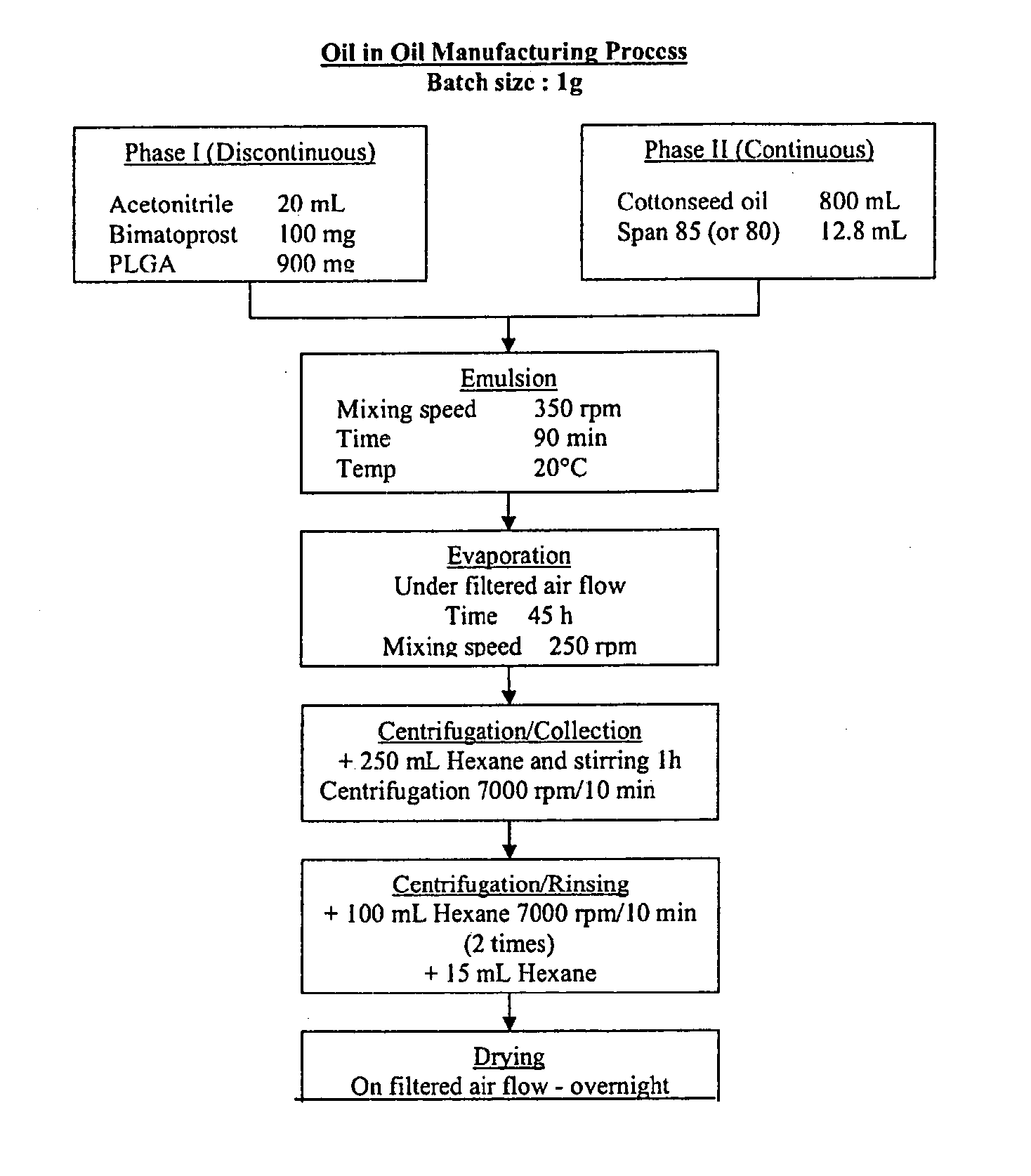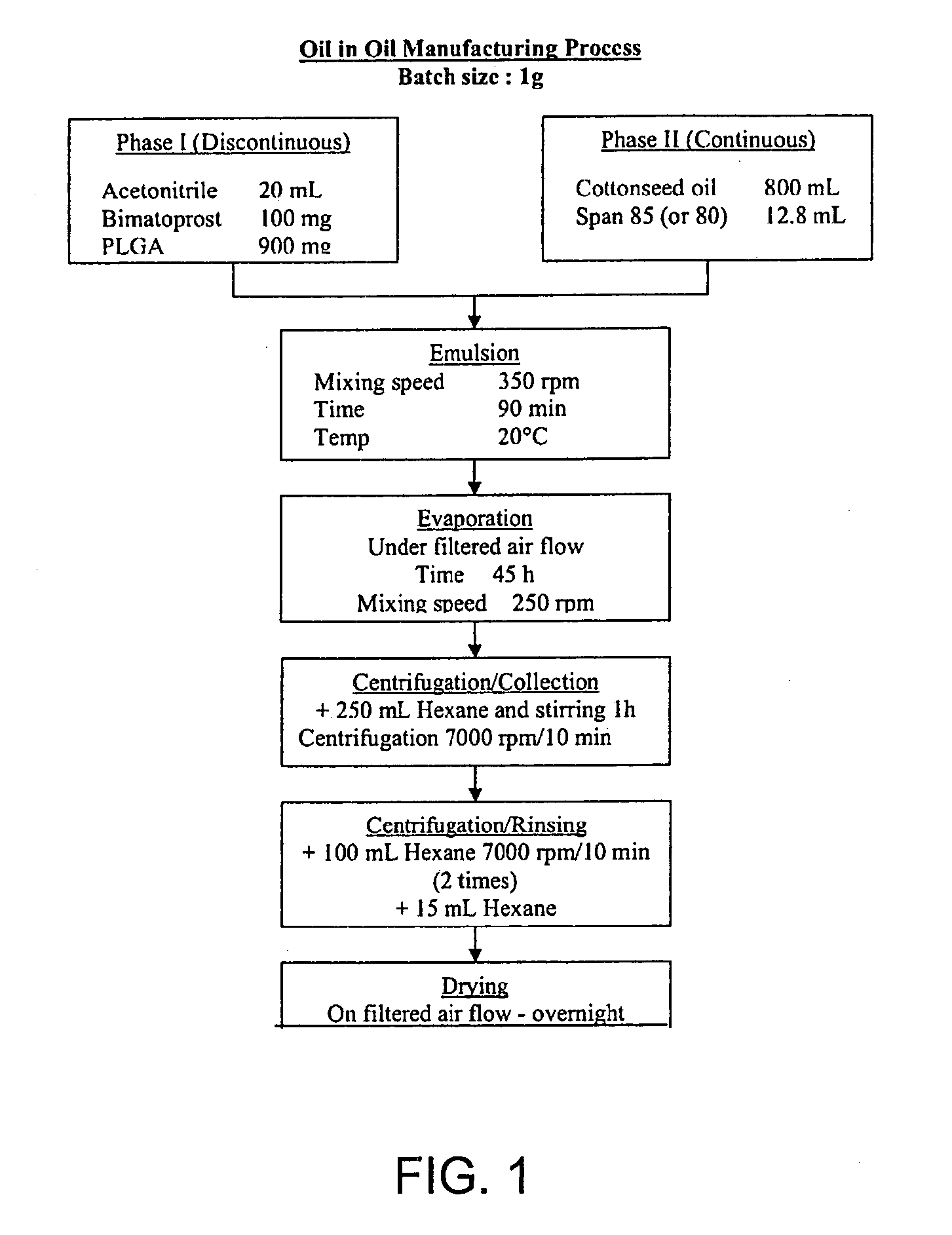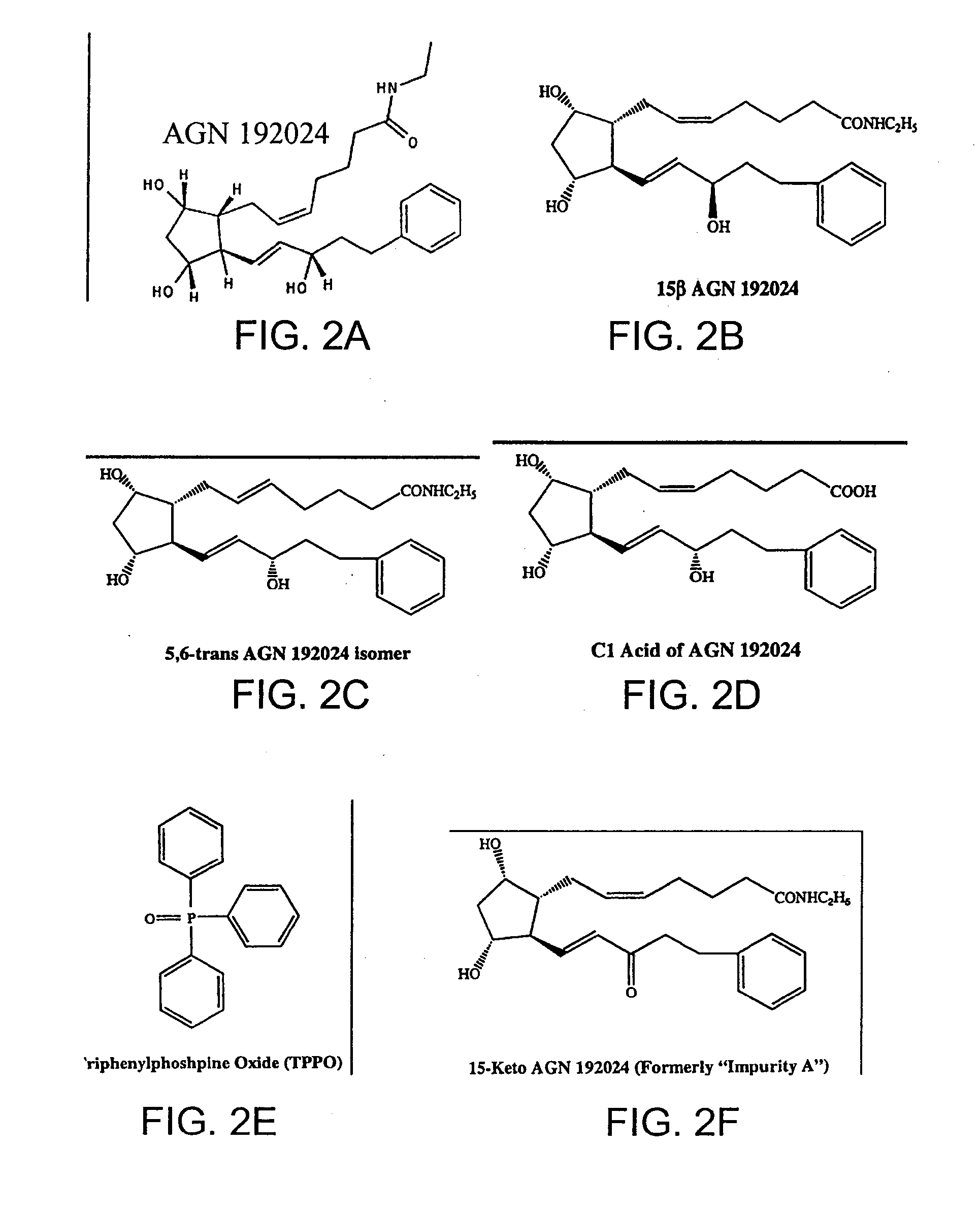Oil-in-oil emulsified polymeric implants containing a hypotensive lipid and related methods
a technology of hypotensive lipid and polymer implants, which is applied in the field of intraocular implants or microparticles, can solve the problems of affecting the clinical potential of prostaglandins in the management of conditions associated with increased ocular pressure, e.g. glaucoma, and is greatly limited by these side effects, so as to facilitate the obtaining of successful treatment results
- Summary
- Abstract
- Description
- Claims
- Application Information
AI Technical Summary
Benefits of technology
Problems solved by technology
Method used
Image
Examples
example 1
Manufacture and Testing of Implants Containing Bimatoprost and a Biodegradable Polymer Matrix
Biodegradable implants were made by combining bimatoprost with a biodegradable polymer composition. 800 mg of polylactic acid (PLA) was combined with 200 mg of bimatoprost. The combination was dissolved in 25 milliliters of dichloromethane. The mixture was placed in a vacuum at 45° C. overnight to evaporate the dichloromethane. The resulting mixture was in the form of a cast sheet. The cast sheet was cut and ground in a high shear grinder with dry ice until the particles could pass through a sieve having a pore size of about 125 μm. The percent of bimatoprost present in the microparticles was analyzed using high pressure liquid chromatography (HPLC). The percent release of bimatoprost from the microparticles was profiled using dialysis. The percent of bimatoprost remaining in the recovered particles was analyzed by HPLC.
The release profile is described in Table 1.
Elapsed TimeTime Point(Days)...
example 2
Extrusion Process and Compression of Manufacturing Bimatoprost-Containing Biodegradable Intraocular Implants
Bimatoprost is combined with a biodegradable polymer composition in a mortar. The combination is mixed with a shaker set at about 96 RPM for about 15 minutes. The powder blend is scraped off the wall of the mortar and is then remixed for an additional 15 minutes. The mixed powder blend is heated to a semi-molten state at specified temperature for a total of 30 minutes, forming a polymer / drug melt.
Rods are manufactured by pelletizing the polymer / drug melt using a 9 gauge polytetrafluoroethylene (PTFE) tubing, loading the pellet into the barrel and extruding the material at the specified core extrusion temperature into filaments. The filaments are then cut into about 1 mg size implants or drug delivery systems. The rods may have dimensions of about 2 mm long×0.72 mm diameter. The rod implants weigh between about 900 μg and 1100 μg.
Wafers are formed by flattening the polymer melt...
example 3
Bimatoprost / PLA / PLGA Intraocular Implants to Treat Glaucoma
A 72 year old female suffering from glaucoma in both eyes receives an intraocular implant containing bimatoprost and a combination of a PLA and PLGA in each eye. The implants weigh about 1 mg, and contain about 500 mg of bimatoprost. One implant is placed in the vitreous of each eye using a syringe. In about two days, the patient reports a substantial relief in ocular comfort. Examination reveals that the intraocular pressure has decreased, the average intraocular pressure measured at 8:00 AM has decreased from 28 mm Hg to 14.3 mm Hg. The patient is monitored monthly for about 6 months. Intraocular pressure levels remain below 15 mm Hg for six months, and the patient reports reduced ocular discomfort.
PUM
| Property | Measurement | Unit |
|---|---|---|
| molecular weight | aaaaa | aaaaa |
| mean particle diameter | aaaaa | aaaaa |
| particle diameter | aaaaa | aaaaa |
Abstract
Description
Claims
Application Information
 Login to View More
Login to View More - R&D
- Intellectual Property
- Life Sciences
- Materials
- Tech Scout
- Unparalleled Data Quality
- Higher Quality Content
- 60% Fewer Hallucinations
Browse by: Latest US Patents, China's latest patents, Technical Efficacy Thesaurus, Application Domain, Technology Topic, Popular Technical Reports.
© 2025 PatSnap. All rights reserved.Legal|Privacy policy|Modern Slavery Act Transparency Statement|Sitemap|About US| Contact US: help@patsnap.com



